Published in November, 2021 by Pen & Sword and written by Mark Yonge, this hardback book measures around 24.1 cm x 17.2 cm, has 272 pages and 127 colour and black and white illustrations. It has a published price of £30, and at the time of writing it can be obtained online from Pen & Sword for a 10% discount and from Amazon for £21.10.
There are 19 chapters that, although they mainly concentrate on schemes in the southeast of England, also cover the breadth of England, from the Cleveleland Extension Mineral Railway near Whitby in North Yorkshire to Brunel’s South Devon Atmospheric Railway. Along the way, the book explores parts of the Mid-Suffolk Light Rail that were not completed and a viaduct at Tadcaster in Yorkshire built by the railway king, George Hudson.
The book’s title Unfinished Lines sets the scene as it does not describe the history of completed lines, but looks at the neglected subject of railways that were planned with grand ideas but sadly no firm foundation in economic sense. It fills gaps in the story of our railways, and will especially appeal to those with an interest in abandoned industrial archaeology.
The author took advantage of the Lockdown caused by the Covid-19 Pandemic to write this book and must be commended for what is a good read. He has provided well-chosen illustrations of extant remains, and portraits of the personalities behind the schemes, plans, and maps.
Especially useful are photos of what remains of the lines and also instructions on how to find them, and detailed instructions on how to find the remains.
A browse through this book will awaken interest in railway relics and show just how much is hidden in the undergrowth if we care to look. It will surely raise interest in what could be behind seemingly insignificant brickwork or mounds of earth in the countryside.
The high quality of the finished article complements the author’s efforts, and deserves a place on any railway enthusiast’s bookshelf.
A couple of minor comments cover the maps, of which the hand-drawn ones are clear, but where the author has used Google Earth maps, some of them are difficult to read. Another comment is a large amount of white space in the outside margins, with the margins covering a quarter of the page width.
In so many cases remains have become part of the landscape that the casual visitor would not give them a second glance.
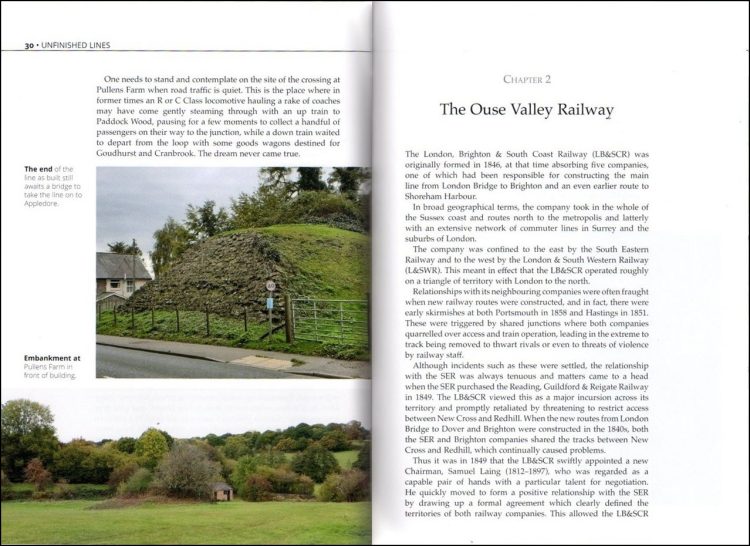
The author’s own maps give a clear indication of the routes in question.
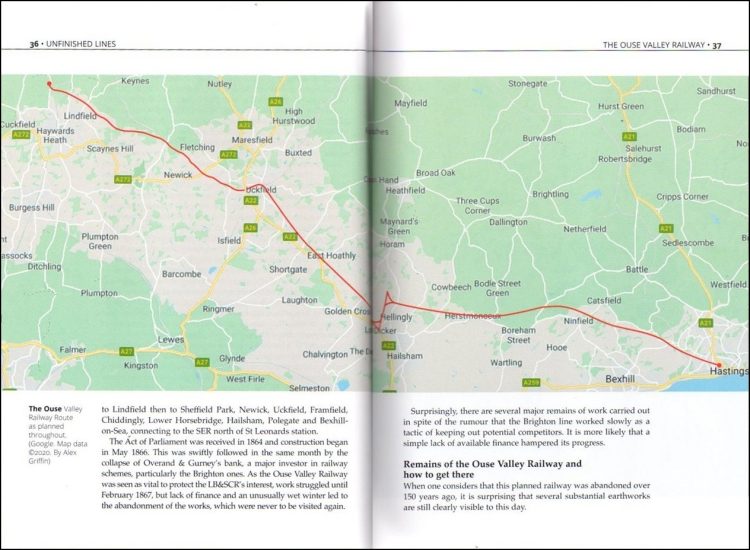
Where the author has used an overlay on Google maps, the result is less distinct.
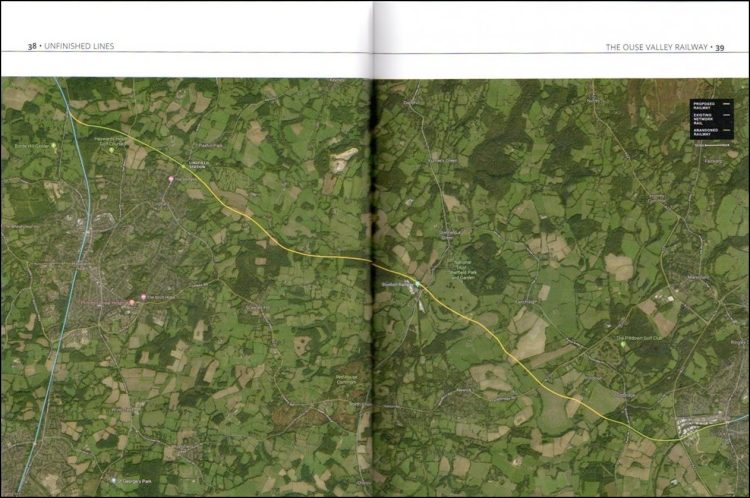
The author is to be congratulated for the clarity of his photographs, many of which must have been quite problematic in gaining access.
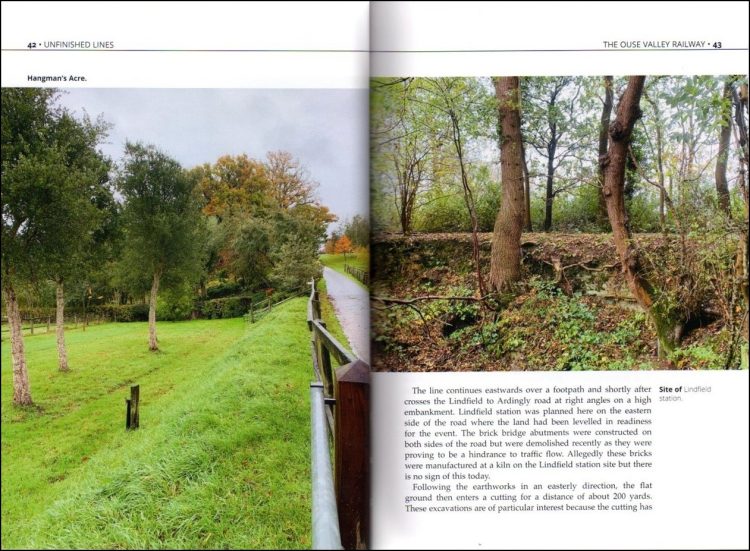
One of the standout features of the book is its emphasis on providing concise instructions to access the remains.
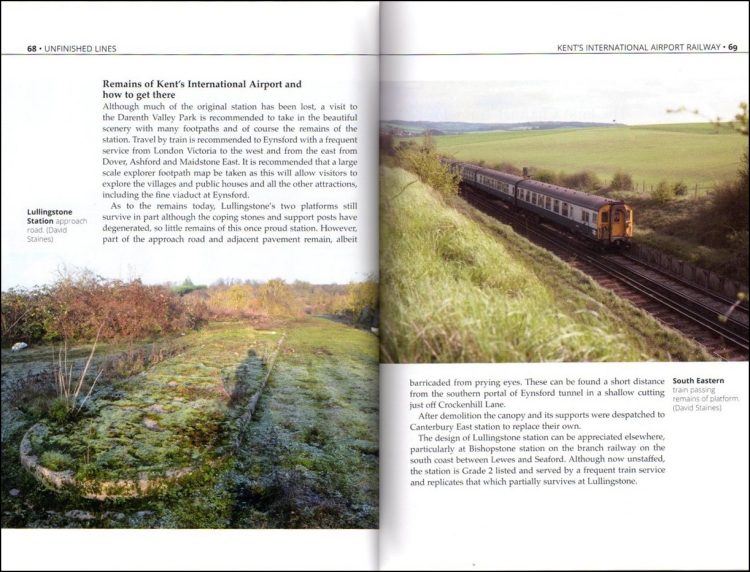
To the casual observer, many remains do not merit a second glance.
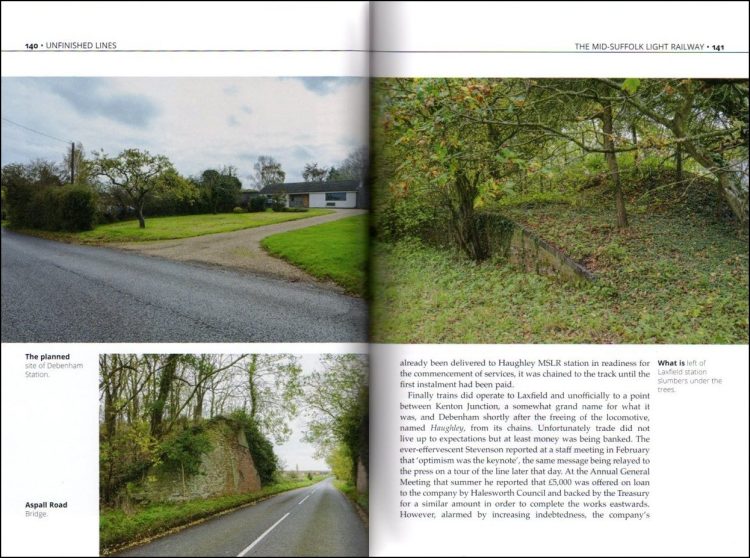
In summary, this book is an interesting overview of lines that were not proceeded with. Opens up corners of long-lost railways, and written in a very readable non-technical style. Useful if you plan to visit any of the schemes mentioned, and a fascinating browse if you don’t. A welcome addition to railway literature and highly recommended.
The book is available to purchase from Amazon and from Pen & Sword.
We would like to thank Pen & Sword for providing RailAdvent with a copy of the book for review.


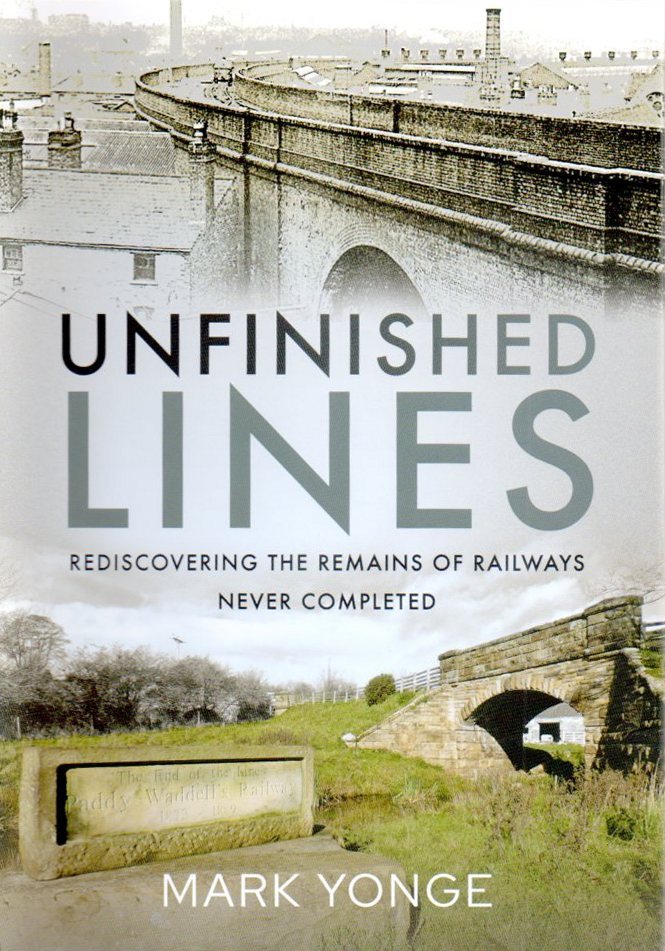



Responses
28/11 22, Perhaps a follow-up publication could feature tracts of former lines that have potential economic benefits & could be resurrected. Also a chapter or two outlinning benefits & presenting a case for new railway construction.
It would be interesting to know which lines it covers.
I would hardly count “excessive margin width” as a ‘con’. Giving pictures and text space to breathe is a mark of good book design. Sometimes, as in a Bradshaw railway timetable, large amounts of data have to be crammed into as small a space as possible; where that isn’t necessary then give the images some room.
Nice to see maps reproduced at sufficient size to read and placing the line in its proper geographical context.